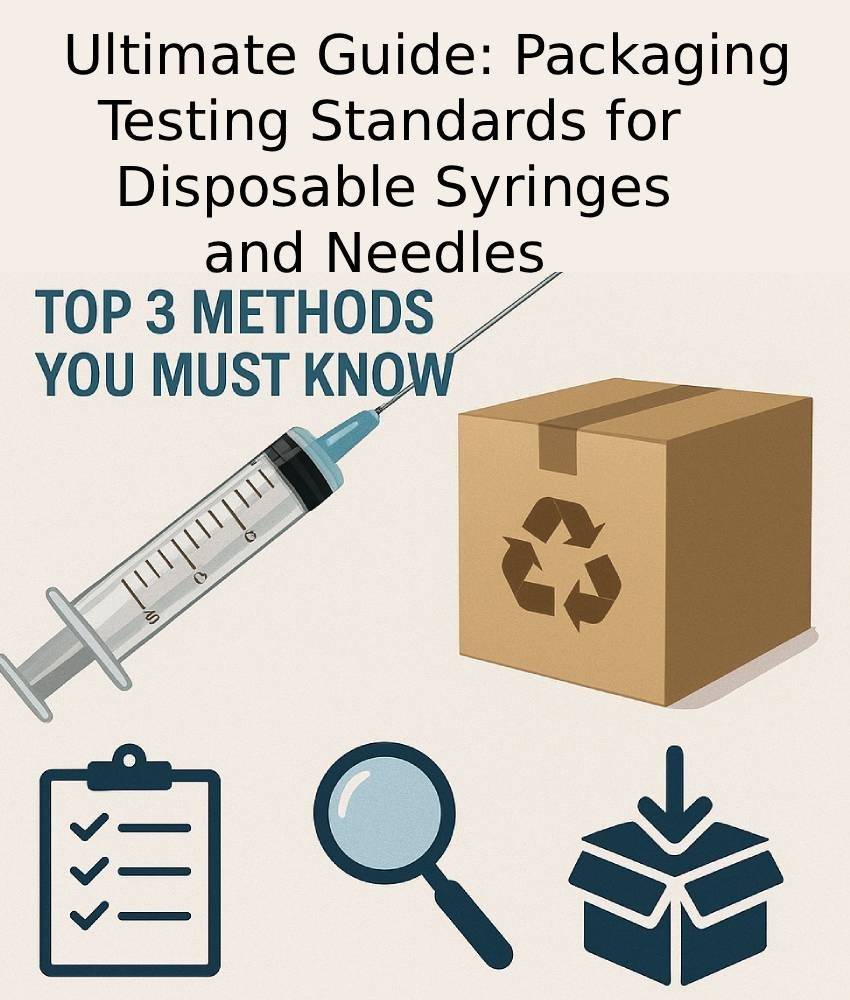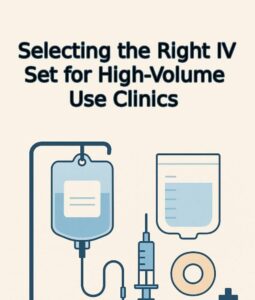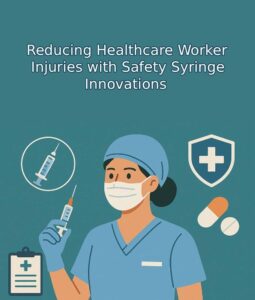📦 Why Packaging Testing Matters for Disposable Medical Devices
When it comes to disposable syringes and needles, the integrity of the packaging can be a matter of life and death. Medical devices are highly sensitive to environmental and handling conditions, which is why rigorous packaging test methods, especially the box drop test, are vital. Adherence to ISO packaging standards guarantees the safe delivery and usability of these devices in clinical environments.
This blog will unpack the most critical aspects of medical device packaging testing, particularly for disposable syringes and needles. We’ll examine international standards, testing types, real-world simulations, and how your organization can stay compliant while maximizing product safety and quality. Know more..
📋 Table of Contents
| Main Headings | Subtopics |
| H1: Packaging Testing Standards for Disposable Syringes and Needles | |
| H2: Understanding the Purpose of Packaging Tests | Regulatory safety, contamination prevention, shelf-life assurance |
| H2: Overview of ISO Packaging Standards | ISO 11607-1 & ISO 11607-2, sterilization integrity, validation procedures |
| H2: Primary Packaging Test Methods Explained | Drop testing, compression, leak testing, seal strength |
| H2: The Box Drop Test in Detail | Drop angles, packaging tiers, impact metrics |
| H2: Mechanical vs. Environmental Testing | Vibration, temperature, humidity, handling simulation |
| H2: Common Failures in Syringe & Needle Packaging | Seal breach, sterile barrier compromise, physical damage |
| H2: Packaging Material Requirements | Medical-grade films, blister packs, barrier coatings |
| H2: Key ISO Packaging Standards to Follow | ISO 11607, ISO 13485, EN 868, ASTM standards |
| H2: Real-Life Application of Testing Methods | Clinical and logistics case studies |
| H2: Box Drop Test Protocols | Drop height calibration, test repetition, defect documentation |
| H2: Validation and Qualification Steps | IQ, OQ, PQ – Installation, Operational, and Performance Qualification |
| H2: Data Logging and Test Documentation | Test forms, digital logging tools, auditing guidelines |
| H2: Impact of Poor Testing on Product Recalls | Case studies, FDA warnings, patient safety issues |
| H2: Testing Equipment and Tools | Drop testers, compression machines, seal testers |
| H2: Innovations in Packaging Testing Technology | Smart sensors, AI-driven defect detection, 3D packaging simulation |
| H2: Best Practices to Pass All Packaging Tests | Training, SOPs, equipment maintenance, standard alignment |
| H2: Frequently Asked Questions (FAQs) | 6 essential FAQs covered |
| H2: Conclusion | Summary, next steps, compliance checklist |
📦 Understanding the Purpose of Packaging Tests
Packaging tests ensure that disposable syringes and needles remain sterile, undamaged, and safe for use. They simulate real-world conditions like shipping, storage, and handling to detect vulnerabilities in packaging systems.
Key Objectives:
- Prevent contamination or infection.
- Guarantee shelf-life through material durability.
- Fulfill legal and regulatory standards.
In essence, these tests aren’t just bureaucratic—they’re life-saving.
📜 Overview of ISO Packaging Standards
ISO packaging standards play a crucial role in global medical packaging compliance. Among the most critical are:
- ISO 11607-1: Defines packaging system requirements.
- ISO 11607-2: Focuses on packaging validation and process control.
- ISO 13485: Covers quality management for medical device manufacturers.
- EN 868 Series: Addresses material-specific packaging requirements.
These standards help ensure every packaging test method is performed under scientifically justified conditions.
🔬 Primary Packaging Test Methods Explained
Medical packaging undergoes several tests. The most relevant packaging test methods for syringes and needles include:
- Seal Strength Testing: Evaluates the integrity of packaging seals.
- Leak Testing: Detects any compromise in sterile barriers.
- Compression Testing: Simulates stacking and shipping pressures.
- Visual Inspection: Identifies cracks, tears, or deformations.
Each method is essential for validating the performance of your packaging system.
📦 The Box Drop Test in Detail
The box drop test is a critical method used to evaluate the durability of medical packaging under impact. It’s designed to simulate what happens when boxes are dropped during transit.
How it Works:
- Standard Drop Heights: Typically 1.2 meters (per ISO).
- Drop Angles: Corner, edge, and face drops.
- Repetition: Multiple drops to test consistency.
- Assessment: Visual inspection and seal integrity tests follow each drop.
Highlighting issues such as material fatigue or internal shifting, the box drop test ensures syringes and needles stay secure from plant to patient.
🌡️ Mechanical vs. Environmental Testing
Medical packaging isn’t just jostled—it’s exposed to varying climates and transit scenarios. Here’s a comparison:
| Test Type | Purpose |
| Mechanical | Simulates handling (e.g., box drop test) |
| Environmental | Simulates exposure (e.g., temperature, humidity) |
Packaging test methods must include both dimensions to comply with ISO packaging standards.
❌ Common Failures in Syringe & Needle Packaging
When testing is neglected or poorly executed, the consequences can be severe:
- Seal Breach: Leads to sterility loss.
- Material Cracking: Compromises barrier strength.
- Label Smearing or Fading: Affects traceability and usage safety.
Each failure type underscores the importance of robust packaging test methods.
🧴 Packaging Material Requirements
To pass rigorous testing, materials must be medical-grade:
- Polyethylene and Tyvek: Widely used for sterilization compatibility.
- Multi-layer Films: Improve puncture resistance.
- Printed Coatings: Require ink stability under testing conditions.
The right material improves success rates during box drop tests and other mechanical stress assessments.
📖 Key ISO Packaging Standards to Follow
| Standard | Purpose |
| ISO 11607 | Design and validation of packaging for terminally sterilized devices |
| ISO 13485 | Quality systems for medical devices |
| ASTM D5276 | Drop test method for shipping containers |
These ISO packaging standards are universally accepted benchmarks for validating your packaging test methods.
📊 Real-Life Application of Testing Methods
Let’s consider a real example: A large hospital in Europe reported recurring syringe leakage. After a box drop test, it was found that corner impacts were weakening side seals. The solution? Reinforced corners and material substitution. Post-implementation, zero leakages occurred over six months.
📉 Box Drop Test Protocols
Executing the box drop test isn’t arbitrary. Key protocols include:
- Calibrate Drop Height: Align with ISO/ASTM guidelines.
- Repeat Drops at Angles: Edge, corner, face.
- Log Defects Immediately: Cracks, dents, punctures.
- Use High-Speed Cameras (optional): For detailed failure analysis.
This testing is essential for passing ISO packaging standards audits.
🔁 Validation and Qualification Steps
A compliant packaging system must undergo:
- IQ – Installation Qualification
- OQ – Operational Qualification
- PQ – Performance Qualification
Each step aligns with ISO packaging standards to ensure long-term consistency and quality.
🧾 Data Logging and Test Documentation
Proper recordkeeping is key for compliance and traceability. Use:
- Digital Test Logs
- Barcoded Packaging IDs
- Automated Reporting Tools
Accurate records make it easier to analyze repeated failures and refine your packaging test methods.
🚫 Impact of Poor Testing on Product Recalls
In 2023, a major manufacturer recalled 5 million syringes due to weak seals. Investigations revealed skipped box drop tests and outdated material usage. The cost? Over $20 million and serious reputational damage.
🧰 Testing Equipment and Tools
Reliable testing requires robust instruments:
- Drop Testers: For box impact simulations.
- Compression Machines: For stacked pressure simulation.
- Seal Strength Testers: To evaluate seal integrity.
Choosing the right tools enhances test accuracy and standard compliance.
🧠 Innovations in Packaging Testing Technology
Emerging tech is revolutionizing testing:
- AI-Based Defect Recognition
- 3D Simulation of Packaging
- IoT-Connected Drop Testers
These innovations make it easier to follow evolving ISO packaging standards.
💡 Best Practices to Pass All Packaging Tests
- Train staff in packaging test methods.
- Run frequent mock audits.
- Maintain test equipment regularly.
- Align SOPs with ISO packaging standards.
- Document everything with timestamps and signatures.
❓Frequently Asked Questions (FAQs)
1. What is the box drop test?
It’s a simulated drop procedure to assess how packaging responds to physical shocks during shipping.
2. Why are ISO packaging standards important?
They ensure packaging integrity, sterility, and regulatory compliance.
3. How often should packaging tests be conducted?
Ideally, for every production batch or after any material or process change.
4. Can failed packaging tests result in recalls?
Absolutely. Poor test results can compromise safety, leading to regulatory action and product recalls.
5. What’s the most important packaging test method?
The answer depends on the use-case, but box drop tests and seal strength evaluations are universally critical.
6. Are packaging test methods the same worldwide?
They may vary slightly but are usually aligned through global standards like ISO and ASTM.
✅ Conclusion
In the world of medical devices, especially disposable syringes and needles, reliable packaging is more than protection—it’s part of the product’s safety system. With the right packaging test methods, particularly the box drop test, and adherence to stringent ISO packaging standards, manufacturers can ensure compliance, reduce recalls, and protect patients.






